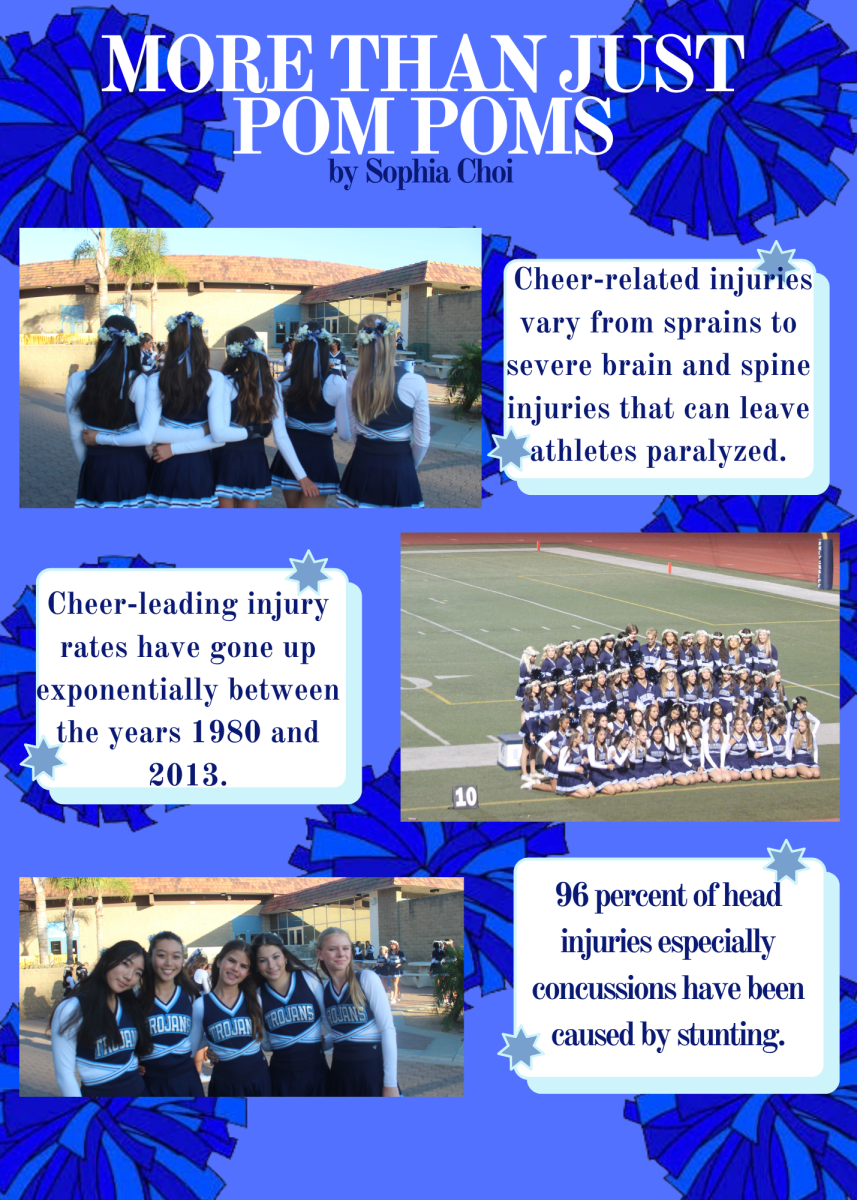*The opinions expressed within the content are solely the author’s and do not reflect the website’s or its affiliates’ opinions and beliefs.*
In the world of sports, there has been an ongoing debate about what constitutes a true athletic activity. While traditional sports, such as football, soccer and basketball have been labeled the epitome of athleticism, there is one particular activity that finds itself on the curb of recognition: cheerleading. It’s time to end the stereotypes and acknowledge cheerleading as a legitimate sport.
Cheerleading has evolved far beyond its early days of chanting cheers and performing sideline routines. Today, competitive cheerleading involves a blend of athleticism: strength, precision, spirit and teamwork. The days of cheerleaders merely cheering on the sidelines with just pom-poms and smiles are long gone. Modern cheerleading routines feature intricate routines that include tumbling, stunts, jumps and dance; all of which are performed with clarity and timing that rival any other sport.
One of the primary misconceptions of cheerleading is that it lacks physical demand. Critics often claim that the absence of a ball or a goal are valid reasons to dismiss it as a sport. However, this fails to recognize the intense physical conditioning and skill required of cheerleaders. Competitive cheer demands flexibility, agility and endurance, making it a comprehensive athletic discipline.
Stunt sequences involve lifting and tossing teammates into the air, requiring power and trust between team members. Tumbling passes showcase gymnastic skills, requiring the same strength and technique seen in gymnastics competitions. To tumble, cheerleaders move their bodies into intricate positions, which involve twisting, flipping and jumping in the air. These elements combined make cheerleading a high-energy and physically demanding activity that is both dangerous and challenging.
In Sept. 2021, 17-year-old high school cheerleader, Makayla Noble, severely injured her spinal cord while practicing for her homecoming rally. This freak tumbling accident hospitalized her for almost two months, leaving her paralyzed and spending weeks in the Intensive Care Unit.
“I knew instantly that I was paralyzed,” Noble said. “I just kind of hit the ground and it was just kind of a tingling sensation through my whole body. And I just couldn’t feel anything below my neck.”
The dangerous aspect of cheer includes creating human pyramids and throwing cheerleaders more than 20 feet in the air. According to Active Kids, cheerleading injury rates increased 440 percent from 1980 to 2013. While sprains are most common, cheerleading injuries can be severe to the spine or brain. For instance, 96 percent of head injuries, including concussions, are caused by stunts. The difficulty of learning how to throw and catch a person labels cheer as a highly stringent sport.
In addition, teamwork is another hallmark of any sport and cheerleading is no exception. A cheer squad functions as a tightly-knit unit, where each member’s performance directly impacts the team’s success. The trust developed among members during stunts and lifts is unparalleled. Collaboration, communication and trust are essential components of a successful routine, mirroring the principles of teamwork in any traditional sport.
Moreover, cheerleading has a strutted scoring system that evaluates the difficulty and execution of routines. Judges assess the precision of movements, complexity of stunts and overall entertainment value. This specific scoring criteria calls for perfect execution, not leaving any room for error in a simple two-minute routine. For example, in a series of jumps in a typical routine, every person that lands with their feet apart is approximately a 0.5-point increase in deductions.
Although cheerleaders devote time to cheering for other sports year-round, they spend the entire year preparing a two-minute routine for competitions. On Dec. 2, UHS hosted their annual regional competition and many students who attended the event got a chance to see what cheer was all about.
“Cheer’s performance was a spectacular culmination of the squad’s countless hours of diligent practice,” senior Max Dreben said.
It’s time to break free from outdated stereotypes and acknowledge cheerleading as a sport. The evolution of cheerleading into a highly competitive and physically demanding activity has shattered the misconception that cheerleading is merely about spirit and pep rallies. Cheerleaders deserve the same respect and recognition as individuals in more traditional sports, as they embody the qualities that define an athlete.












